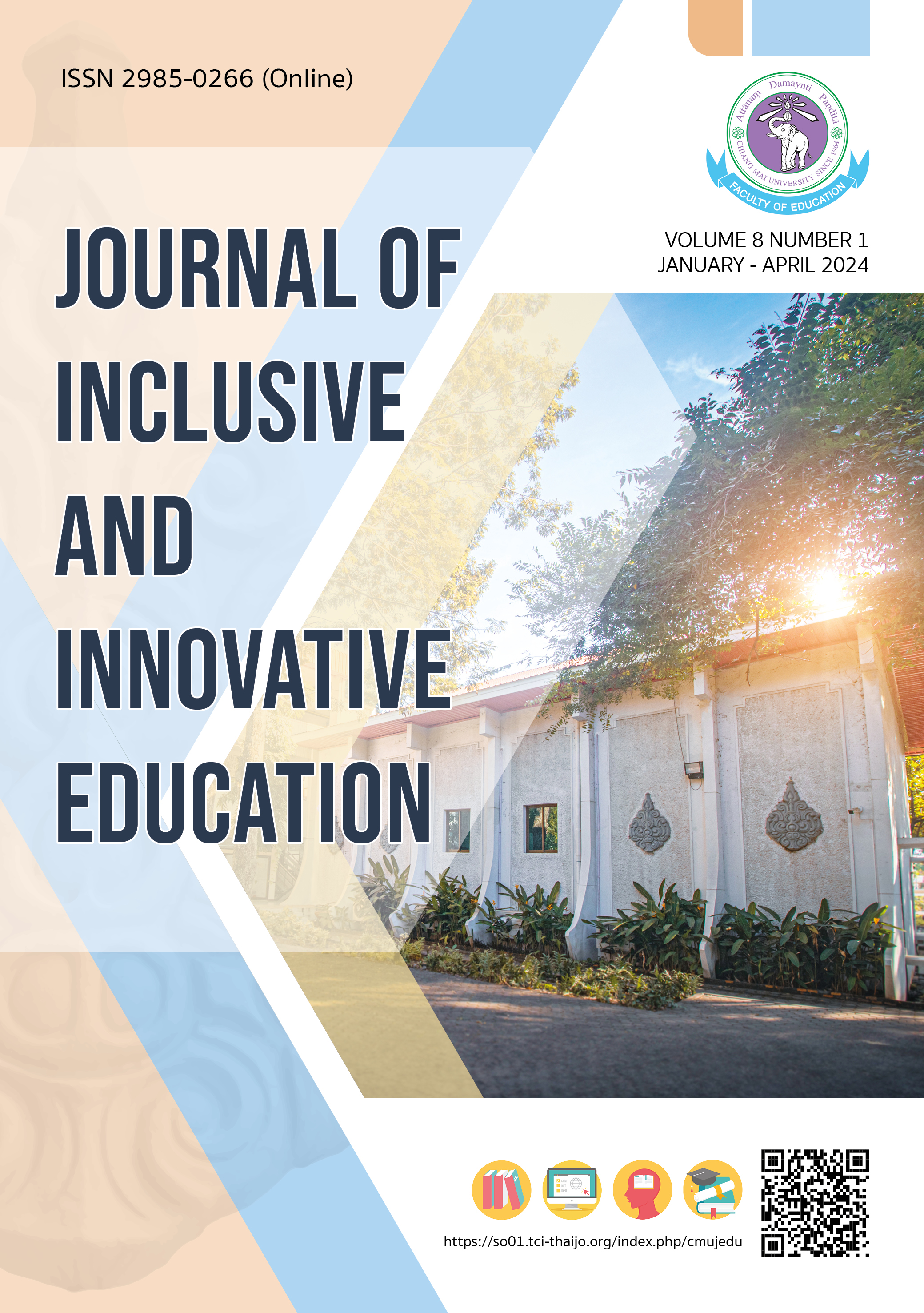The Study of The Problem-Solving of Students Competence with STEM Activities applying Physics concepts Through Problem-Based Learning and Blended Learning Classroom
Main Article Content
Abstract
Problem-solving stands as a complex and essential process in our daily lives, representing a crucial skill for 21st-century students. This research aims to compare students' problem-solving competence through STEM activities, focusing on learning by designing spacecraft shock absorption systems. The researcher presents a problem scenario, emphasizing the encouragement of independent problem-solving among students by collaborative integrating concepts from science, technology, engineering design, and mathematics. This research employed a simple random sampling experimental research method. The sample groups used in the research comprised 2 classrooms of students grade 11, divided by a random method into one control group (30 people) and one Treatment Group (30 people). The study conducted a comparison of problem-solving competence between two student groups: the experimental group, which utilized the blended learning classroom (BLC) in a blended learning environment, and the control group, which employed problem-based learning (PBL) in a traditional classroom setting. The blended learning classroom comprised 3 subclasses: 1) On-demand Learning Classroom, 2) Virtual Learning Classroom, and 3) Face-to-face Learning Classroom. Within the blended learning classroom (BLC), students collaboratively tackled group problems, both collectively in the classroom and individually. In contrast, in the problem-based learning classroom (BLC), students only solved problems collaboratively within the classroom. The students' problem-solving competence was analyzed using criteria designed for evaluating such competence, involving the examination of activity worksheets, prototypes, and presentations. Scores, based on measurement criteria, categorized the problem-solving process into four levels: excellent, good, fair, and poor. The dimensions of problem-solving competence included Useful Description, Physics Approach, Specific Application of Physics, Mathematical Procedures, and Logical Progression. Utilizing Independent t-test statistics to compare problem-solving Competence. The results indicated that 1) Despite both groups suitably studying the same problem scenario in, there was no significant difference in problem-solving competence between the two groups of students exposed to different learning environments. 2)Problem-solving competence in Mathematical Procedures. Different learning management styles resulted in varying competence to solve problems significance at the .05 level.
Article Details

This work is licensed under a Creative Commons Attribution-NonCommercial-NoDerivatives 4.0 International License.
หากผู้เสนอบทความมีความจำเป็นเร่งด่วนในการตีพิมพ์โปรดส่งลงตีพิมพ์ในวารสารฉบับอื่นแทน โดยกองบรรณาธิการจะไม่รับบทความหากผู้เสนอบทความไม่ปฏิบัติตามเงื่อนไขและขั้นตอนที่กำหนดอย่างเคร่งครัด ข้อมูลของเนื้อหาในบทความถือเป็นลิขสิทธิ์ของ Journal of Inclusive and Innovative Education คณะศึกษาศาสตร์ มหาวิทยาลัยเชียงใหม่
References
Adesoji, F. A. (2008). Managing students’ attitude towards science through problem – solving instructional strategy. The Anthropologist, 10(1), 21–24.
Ananiadou, K., & Claro, M. (2009). 21st Century Skills and Competences for New Millennium Learners in OECD Countries. Paris: OECD Publishing.
Atman, C. J., Adams, R. S., Cardella, M. E., Turns, J., Mosborg, S., & Saleem, J. (2007). Engineering design processes: A comparison of students and expert practitioners. Journal of Engineering Education, 96(4), 359–379.
Barrows, H. S. (2000). Problem-based learning applied to medical education. Springfield IL: Southern Illinois University School of Medicine.
Buaraphan, K., Singh, P., & Roadrangka, V. (2005). Exploring preservice physics teachers physics content knowledge. Proceedings of 43rd Kasetsart University Annual Conference: Education, Agricultural Extension and Communication, Social Sciences, Economics, Business Administration, Humanities, Home Economics. (pp.3-10) The Thailand Research Fund, Bangkok (Thailand). [in Thai]
Chamrat, S. (2017) The Definition of STEM and Key Features of STEM Education Learning Activity. STOU Educ. J. 10(2) 13-34. [in Thai]
Docktor, J. L., Dornfeld, J., Frodermann, E., Heller, K., Hsu, L., Jackson, K. A., Mason, A., Ryan, Q. X., & Yang, J. (2016). Assessing student written problem solutions: A problem-solving rubric with application to introductory physics. Physical Review Physics Education Research, 12(1).
Geisinger, K. F. (2016). 21st century skills: What are they and how do we assess them? Applied Measurement in Education, 29(4), 245–249.
Gorman, W. L. (2010). Stream water quality and service learning in an introductory biology class. Journal of Microbiology & Biology Education, 11(1), 21–27.
Guido, R. M. D. (2018, May 6). Attitude and motivation towards learning physics. International Journal of Engineering Research & Technology, 2(11), 2087-2094.
Inprasitha, M. (2023). Blended learning classroom model: A new extended teaching approach for new normal. International Journal for Lesson & amp; Learning Studies, 12(4), 288–300.
Kamcharean, C & Palang D. (2019). Use of an Interactive Simulation: Projectile Motion. Journal of Industrial Education, 18(3), 13-14. [in Thai]
NASA Jet Propulsion Laboratory California Institute of Technology.(2008). Educator guide: Touchdown. NASA. Retrieved from https://www.jpl.nasa.gov/edu/teach/activity/touchdown/.
Neuwirth, L.S., Jović, S. and Mukherji, B.R. (2020). Reimagining higher education during and post-covid-19: Challenges and opportunities. Journal of Adult and Continuing Education, 27(2), 141–156.
Nohda, N. (2000). Teaching by open-approach method in Japanese mathematics classroom. In T.
Nakahara, & M. Koyama (Eds.), Proceedings 24th of the Conference of the International Group for the Psychology of Mathematics Education (pp.39-53). Hiroshima: Hiroshima University.
Tawfik, A., Trueman, R. J., & Lorz, M. M. (2014). Engaging non-scientists in stem through problem-based
learning and service learning. Interdisciplinary Journal of Problem-Based Learning, 8(2), 1-10.
Tumanggor, A. M., Jumadi, J., Wilujeng, I., & Ringo, E. S. (2019). The profile of students’ physics problem solving ability in optical instruments. Jurnal Penelitian & Pengembangan Pendidikan Fisika, 5(1), 29–40.
World Economic Forum. (2020). The Future of Jobs Report 2020. Retrieved from


